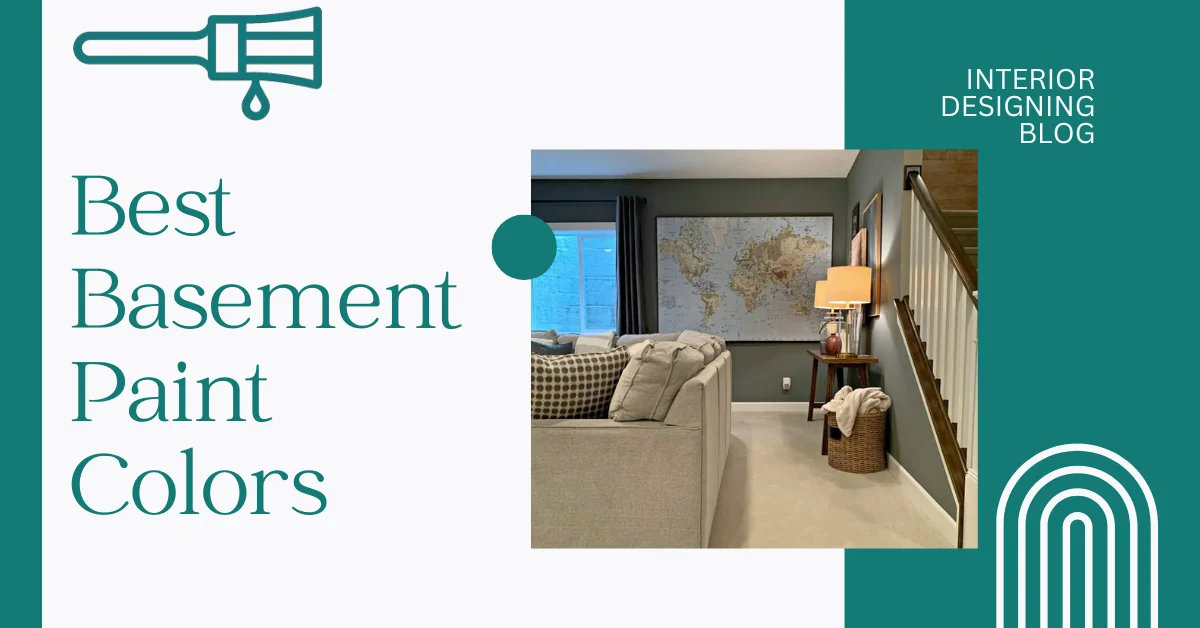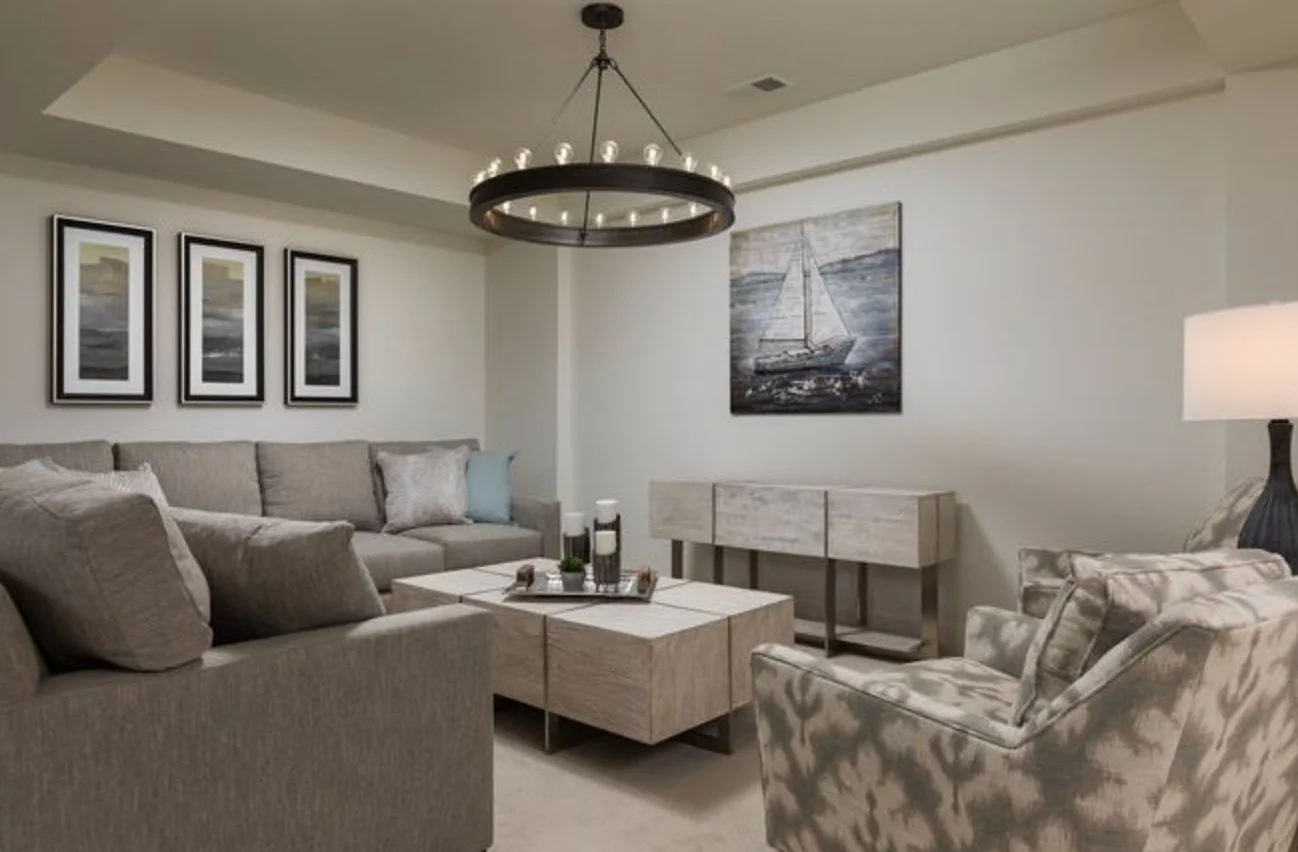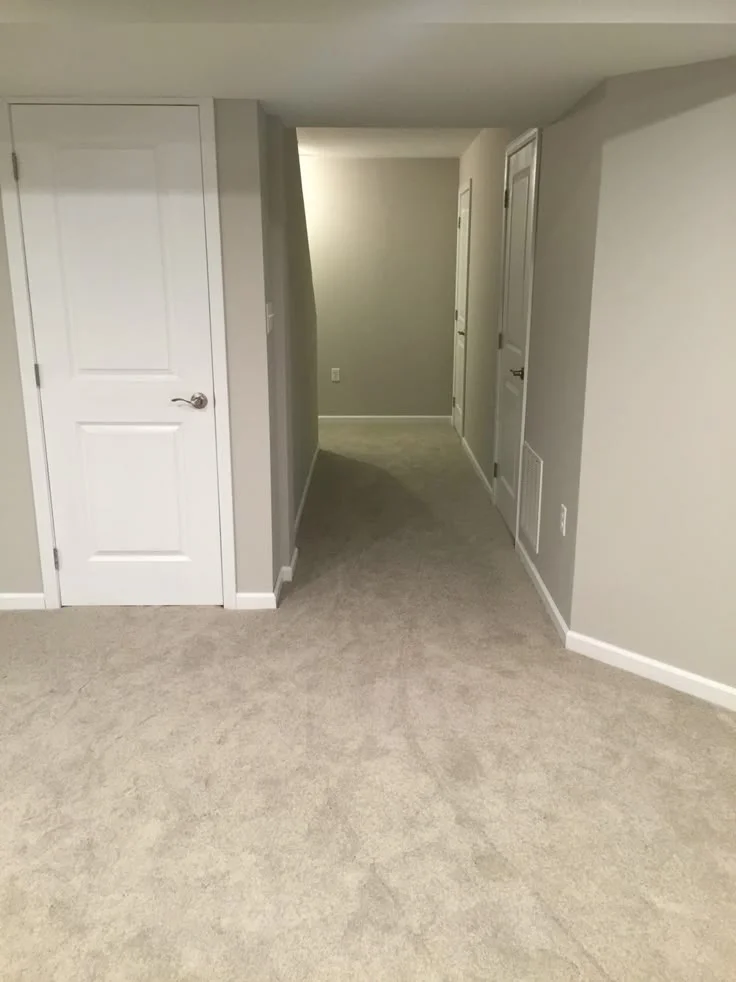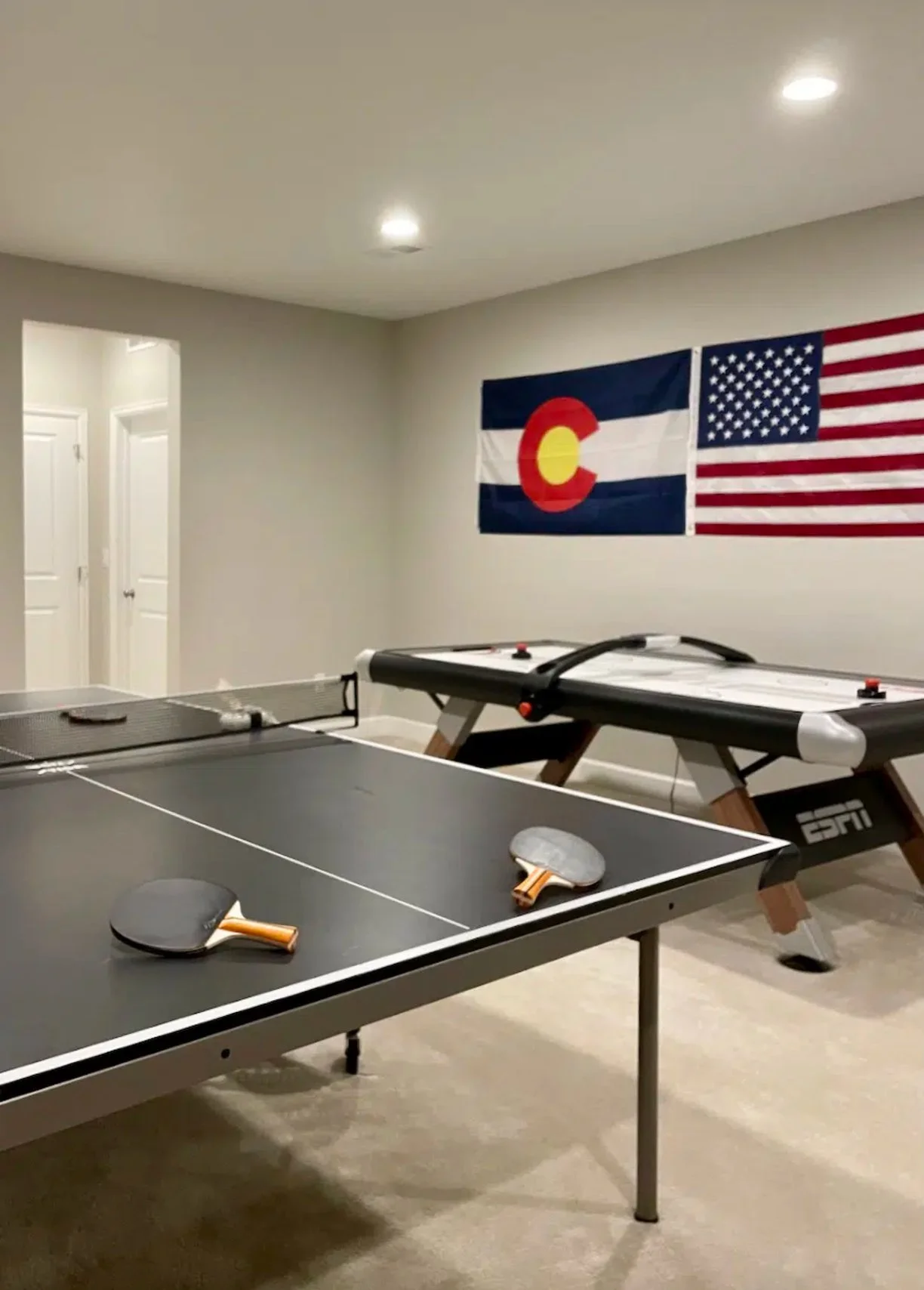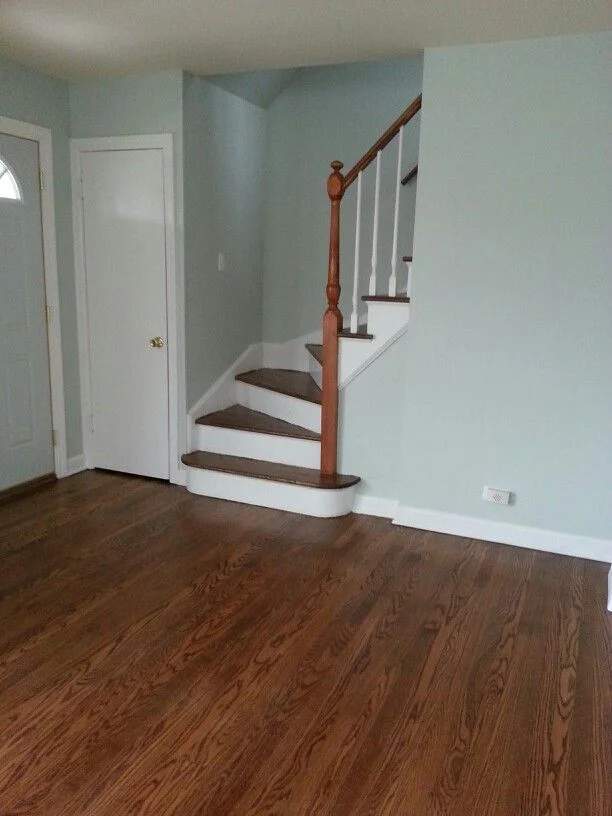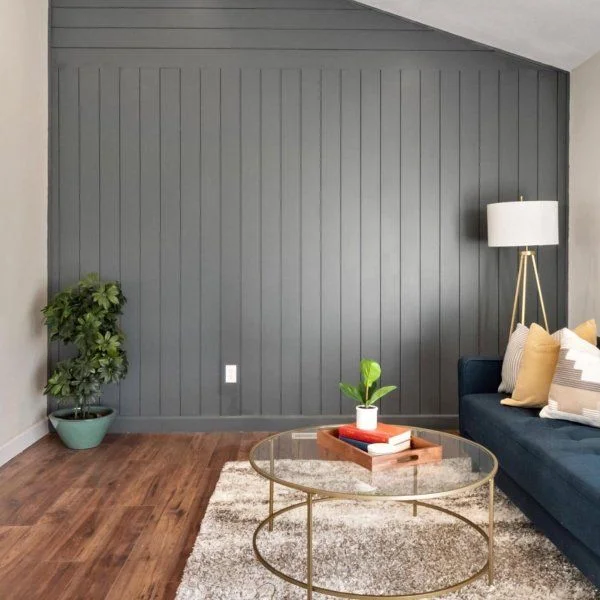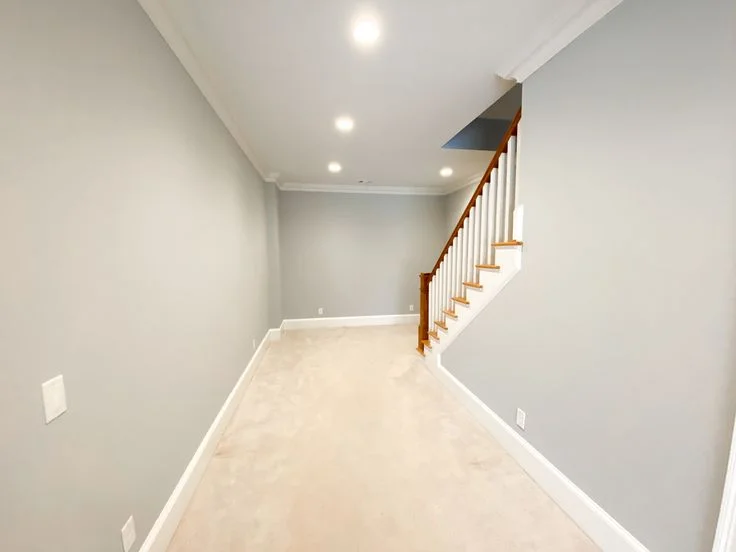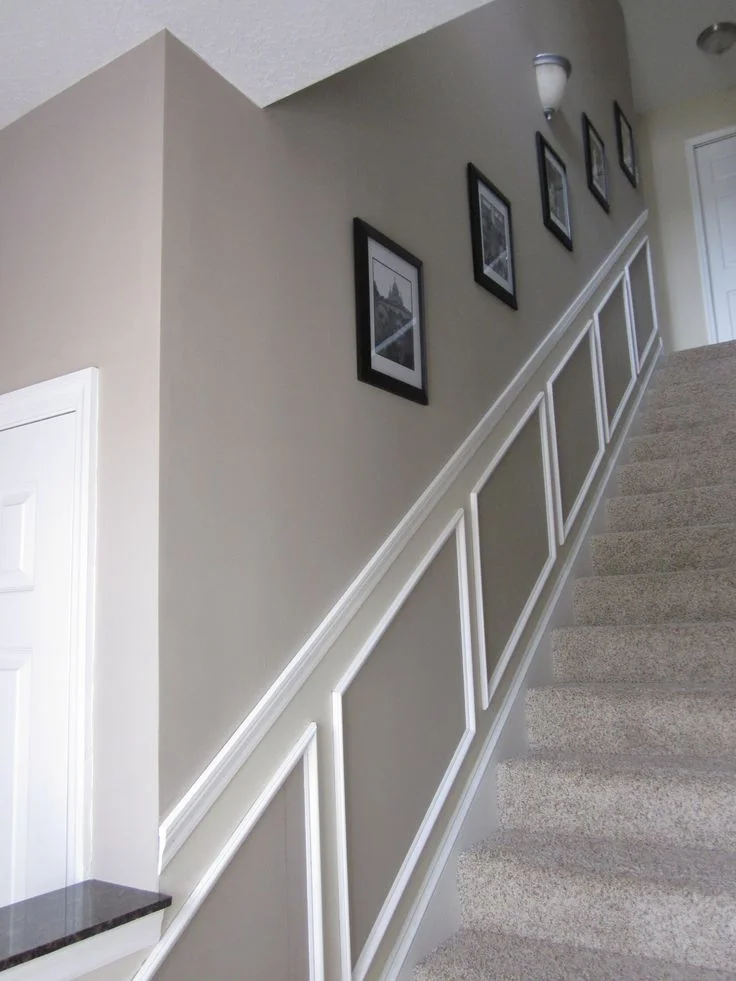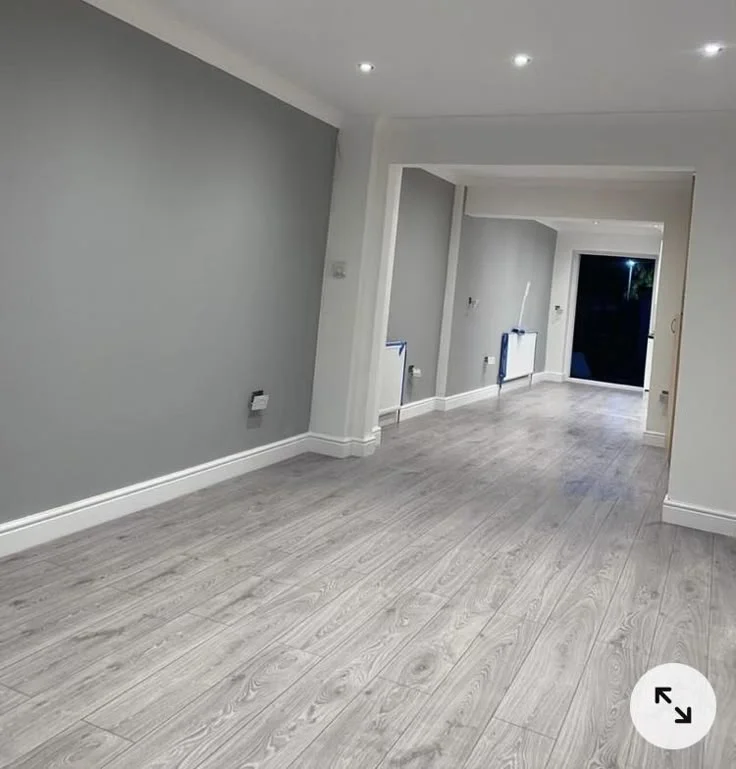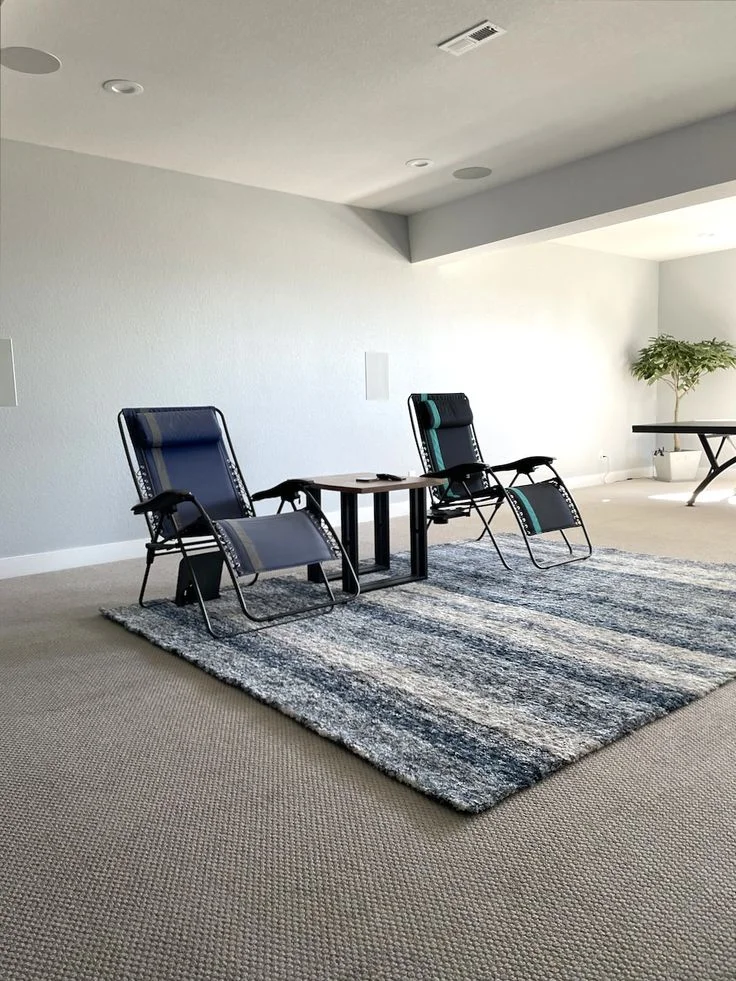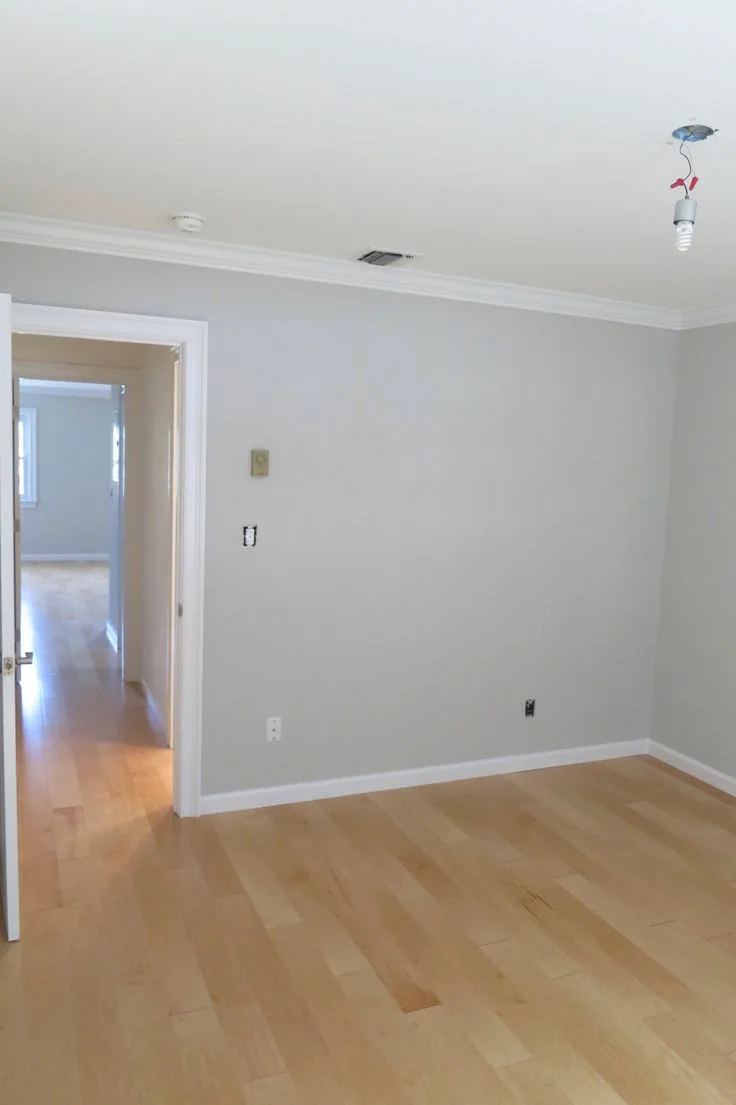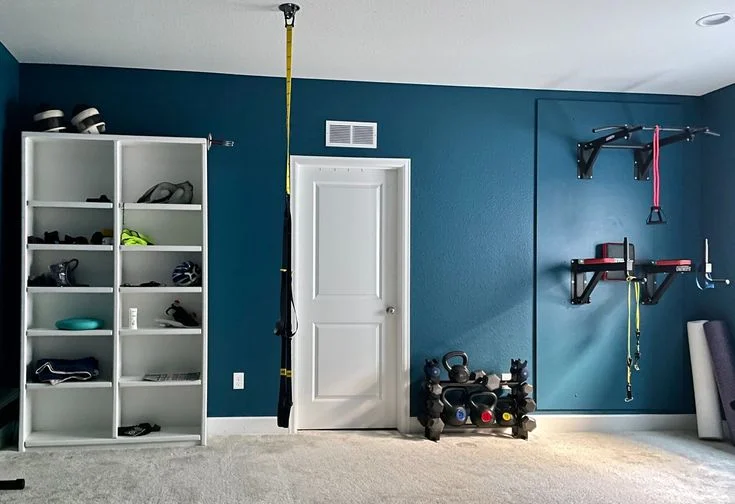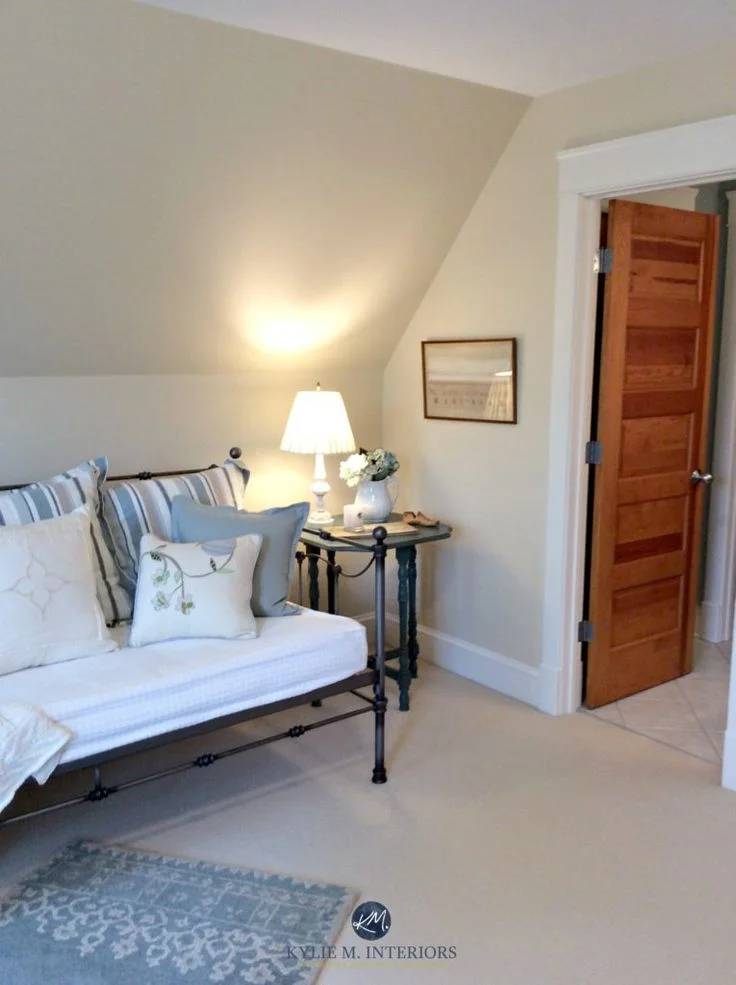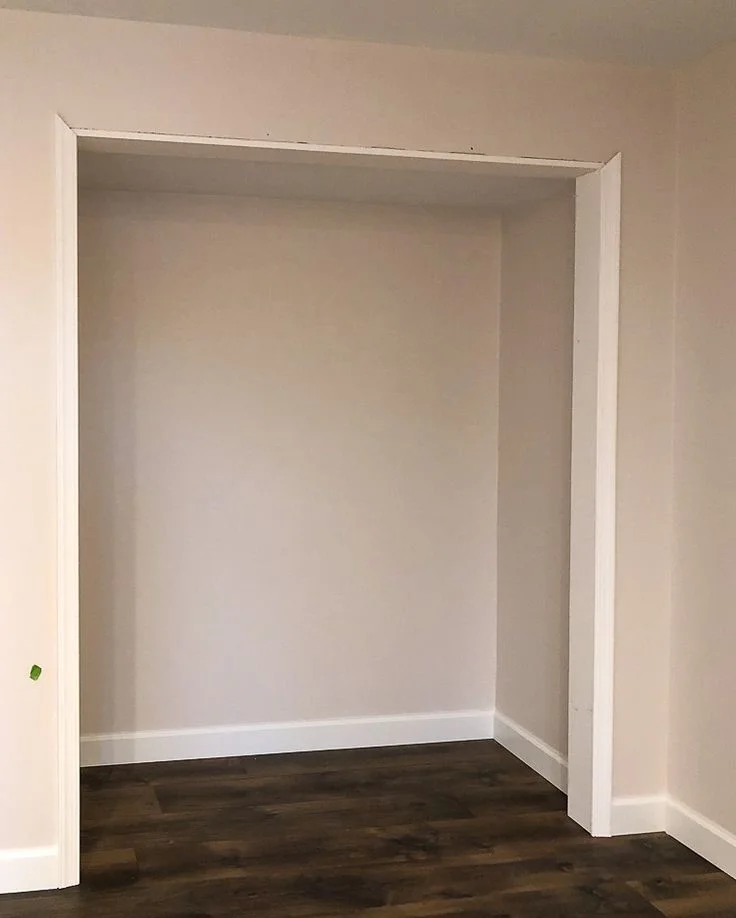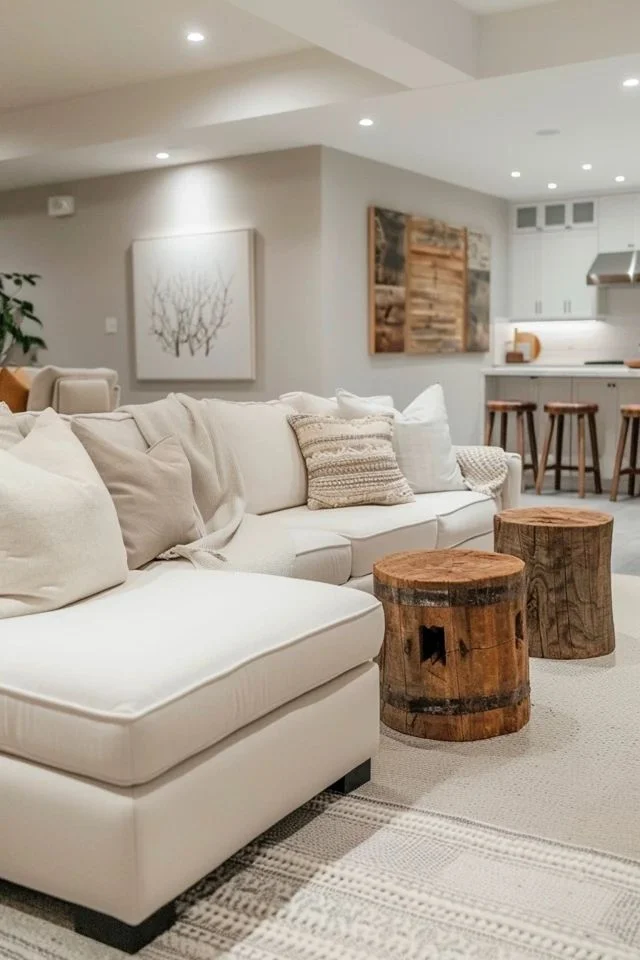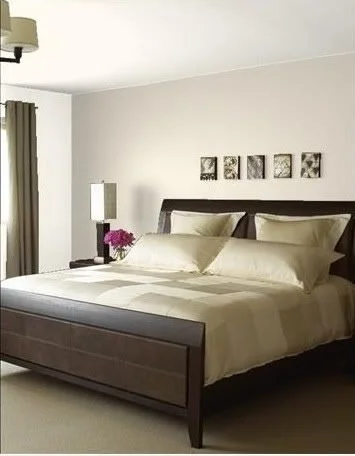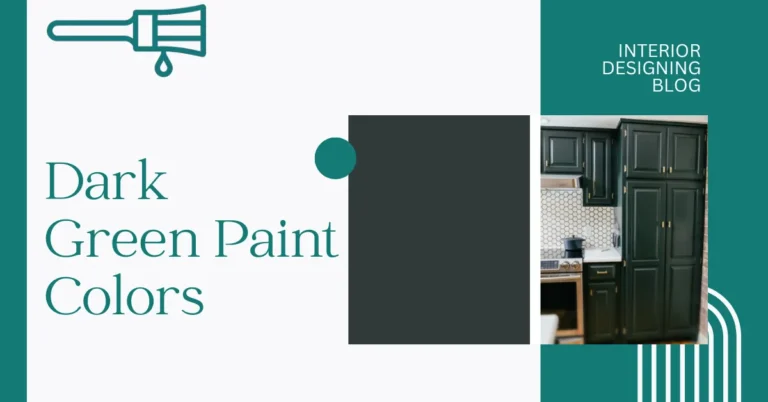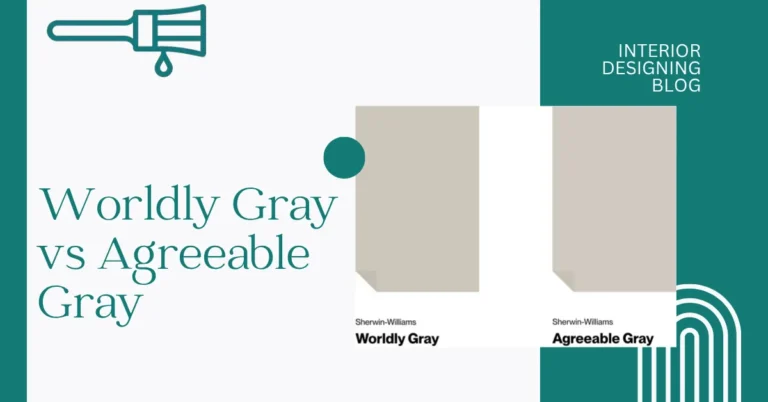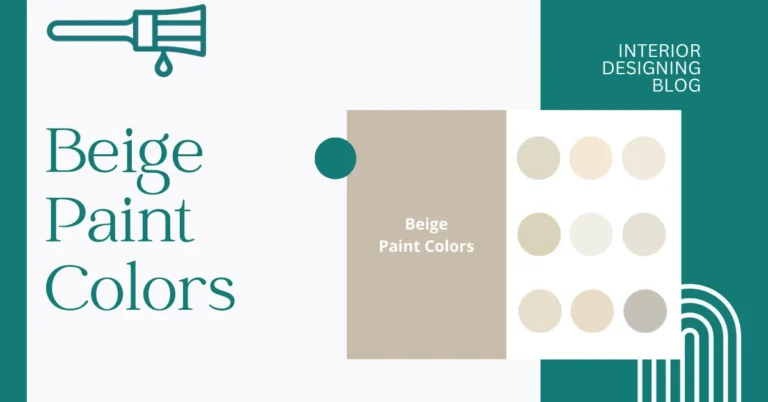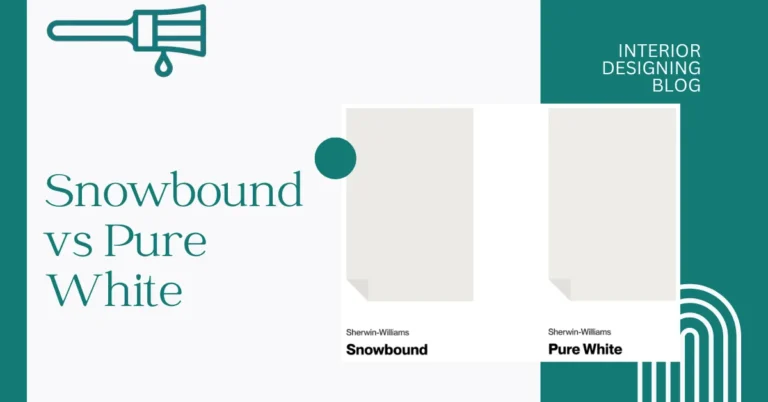How to Choose The Best Basement Paint Colors
Painting a basement isn’t like painting the rest of the house. I learned that the hard way when I picked the same soft gray I used upstairs… and it looked totally dull down here. That’s because basements are kind of tricky. They don’t get much natural light, and some can feel cold or even damp.
A lot of people make the mistake of choosing colors like they would for a sunny bedroom or a bright kitchen. But basements need special attention. With low light and more humidity, the wrong color can make the space feel gloomy or musty. And let’s be honest in choosing Best basement paint colors — no one wants to hang out in a room that feels like a cave.
The good news? The right basement paint colors can turn it into your favorite cozy spot. Think movie nights, playrooms, or even a little office corner. Just picking the right tone makes it feel warmer and more open.
Also, little tip from Interior Designing Blog my own home improvement mess-ups: the type of paint finish matters too. I like using satin or eggshell because they handle the humidity better than flat paint. And color temperature is a big deal — warm tones help brighten things up in basements with no windows.
I’ve got a few go-to paint color ideas and picking tips coming next.
Choosing the Right Basement Paint Colors Function & Lighting
A lot of folks grab white paint for the basement just to play it safe. I’ve done it too — hoping it’ll brighten the place. But honestly? White can feel cold or dull down there. The truth is, choosing cozy basement colors that match how you’ll use the space makes a big difference.
🖌️ Principles for Choosing Colors
- Go with warm shades for basements. These make the room feel more inviting, especially since basements don’t get much sunlight.
- For paint for low ceiling rooms, try a gradient — paint the ceiling a lighter version of the wall color. It can help the ceiling feel higher.
- Use color zoning with tonal variations (like different shades of blue) to divide up a big basement without adding walls.
- Look for paints with a high LRV (Light Reflectance Value) — they bounce more light around the room, which helps in low-light spots.
- Choose moisture-resistant finishes, like satin or semi-gloss. They handle humidity better and are easier to clean.
🏡 Suggestions by Basement Use
- Home theater: Try dark, cozy basement colors like deep navy or charcoal — it feels like a real movie room.
- Kids’ space: Pick fun, playful pastels like mint, light yellow, or soft lavender.
- Guest room: Warm neutrals like beige or greige work great. Add a bold accent wall for style without going too wild.
- Multifunctional basement: Stick with soft, warm shades to tie everything together without making it feel too busy.
Picking the right basement color ideas isn’t hard — it’s about knowing what the space is for and how the light works down there.
1. White Dove by Benjamin Moore – A Warm White That Works in Basements
White Dove by Benjamin Moore is one of my favorite warm white paints for tricky spaces like basements. A lot of people think plain white will brighten things up, but in low light, it often turns flat and lifeless. White Dove doesn’t do that. It has soft yellow undertones that keep it looking warm and cozy, even under basement lighting like overhead LEDs or table lamps.
Its LRV (Light Reflectance Value) is 83.16, which means it reflects a good amount of light without looking too shiny or harsh. That’s super helpful when you’re dealing with basements that don’t get much natural light. What I really like is that it doesn’t shift toward gray in those darker corners — it stays soft and clean.
You can also use it pretty much everywhere — walls, ceilings, trim, even doors. It plays nicely with both calm neutral shades and bold pops of color, so if you ever want to add a navy accent wall or mustard throw pillows, White Dove fits right in.
Interior designers often pick it for north-facing rooms, which tells you it’s great for cool, shadowy areas. If you pair it with layered lighting — like a mix of recessed lights and floor lamps — the warm glow really shines through. It’s easily one of the best basement paint colors for a bright, cozy vibe without the glare.
2. Agreeable Gray by Sherwin Williams
Agreeable Gray by Sherwin Williams is a super popular choice, and I can see why. It’s a warm greige — part gray, part beige — which helps make cold, dark basements feel more comfortable and inviting. The LRV (Light Reflectance Value) is 60, so it reflects a fair amount of light, but not a ton. That means it won’t brighten up a basement by itself.
I’d suggest using it with warm light bulbs, like soft white LEDs, to help bring out the warm tones. If you go with cooler bulbs, it can sometimes look a little muddy or dull — definitely not what you want in a basement.
Now, here’s a small thing to watch for: Agreeable Gray has a sneaky green undertone. It doesn’t always show up, especially in darker rooms, but you might spot it depending on your flooring or furniture. That’s why I always recommend testing a swatch on your wall and checking it during different times of the day. Morning and evening light can totally change how it looks.
What I really like is that it pairs nicely with most materials — whether you’ve got wood floors, carpet, or even concrete. It softens up the space and keeps it from feeling cold or unfinished. This one is easily one of the best low light paint colors because it makes the room feel pulled together without being too bold. And since it’s one of Sherwin Williams’ top-selling neutrals, you’re in safe hands with this one.
3. Sea Salt by Sherwin Williams – A Shifting Gray-Green with Beachy Vibes
Sea Salt by Sherwin Williams is one of those colors that keeps you guessing — and that’s kind of what makes it fun. It’s a soft mix of gray and green, with just a hint of blue underneath. Depending on the lighting, it might lean more green in one corner and more blue in another. It never sits still, which makes it feel calm but also a little playful.
Its LRV is 64, so it reflects a decent amount of light — not super bright, but not too dark either. In a basement with good lighting, Sea Salt feels light, airy, and almost spa-like. But in the darker corners, it gets a little moodier and richer, which some people love. If your basement is north-facing, expect those blue undertones to show up a bit more. In south-facing spots, the green may come through stronger.
Sea Salt works best in beachy basement colors or chill spaces where you want that relaxing, breezy vibe — maybe a guest room, reading corner, or even a yoga spot. It also pairs beautifully with crisp white trim, which helps keep the shifting tones from feeling too dark or confusing.
Even though it’s not as neutral as other basement paints, it’s still one of the best Sherwin Williams colors for basements if you want something that feels soft, calm, and just a little bit different. You just have to love the way it changes — because it definitely will.
4. Peppercorn by Sherwin Williams – A Bold Gray That Adds Depth to Basements
Peppercorn by Sherwin Williams is a deep, rich gray that makes a bold statement in the right basement setup. With an LRV of just 10, it’s definitely on the darker side — but don’t let that scare you. It doesn’t feel cave-like if you use the right lighting. Depending on the room, Peppercorn might hint at green, purple, or even blue tones, giving it a moody, ever-changing feel. In south-facing basements, it carries a touch of warmth. In north-facing spaces, it leans cool and calm, staying closer to a true soft black paint color.
What I love about Peppercorn is how dramatic it looks when paired with crisp white trim. That high contrast gives it a modern, designer feel right away. It’s one of those dark gray basement paint colors that feels sleek, not heavy — especially in a space like a home theater or cozy basement lounge. If you want a stylish, tucked-away retreat, this color delivers.
Just a heads-up: lighting is everything. Go for layered lighting — like wall sconces, dimmable overheads, or even a soft floor lamp — to keep the space from feeling flat. For extra luxury, try matte or velvet finishes; they make the color feel even richer. Peppercorn is often used by designers who want drama without going full black, making it one of the smartest picks for home theater paint ideas or any basement space with modern flair.
5. Mindful Gray by Sherwin Williams – A Balanced Neutral for Functional Basement Spaces
Mindful Gray by Sherwin Williams sits right in the middle with an LRV of 48, which means it’s not too dark, not too bright — just a good, solid middle-ground. In basements with very little natural light, you’ll want to add some lamps or overhead lights to help it show up properly.
But once it’s lit well, it gives the room a cozy, pulled-together feel without being too bold or cold. It’s a great pick if you’re aiming for neutral basement colors that still have a little personality.
What’s nice about Mindful Gray is how it reacts to its surroundings. If you’ve got darker furniture, you might catch a hint of green or purple undertones. With lighter pieces, it looks more soft and balanced. I’ve found it works especially well in east-facing basements, where it can pick up the glow of the morning sun. When paired with white trim like Sherwin-Williams’ Pearly White, it gives off a clean and modern basement paint color vibe.
Since it’s part of the Timeless Colors collection, designers often use it in homes that are being prepped for resale — that tells you how safe and flexible it is. If you add layered lighting, like recessed ceiling lights mixed with a floor lamp or two, you’ll help Mindful Gray keep its warmth and depth even in dim spaces. It’s a smart, calming pick for anyone who wants a basement gray paint that feels just right.
6. Manchester Tan by Benjamin Moore – A Refined Beige That Brightens Basements
Manchester Tan by Benjamin Moore is what I’d call a grown-up beige. It’s soft, calm, and never tries too hard. With a quiet green undertone, it feels more elegant than your average beige — no risk of ending up with those dreaded “banana walls.” It has an LRV of 63.24, which means it reflects a good bit of light.
That makes it a great choice if your basement needs brightening but you don’t want something too stark or white. Even in lower light, it holds steady without turning yellow or muddy.
It blends beautifully into a neutral basement palette, especially if you’re working with warm wood tones like oak or walnut. I’ve seen it used with cozy furniture and cream-colored trim, and it always gives off a soft, timeless feel. If you want something that feels warm and classic — but not boring — this warm beige basement color is a safe, stylish bet.
Bonus? It’s part of Benjamin Moore’s historical collection, so it’s trusted by both designers and folks who just want a cozy basement that doesn’t feel like, well, a basement.
7. Stonington Gray by Benjamin Moore – A Cool, Versatile Gray with Character
Stonington Gray by Benjamin Moore is one of those cool gray paints that looks simple at first, but keeps surprising you. It’s a clean, medium gray with subtle undertones that shift depending on the light. In north-facing basements, it can show a soft purple undertone, especially if you’ve got bright white trim nearby.
Under cooler lighting, it sometimes hints at a stormy blue, giving the space a soft, moody touch without feeling too heavy.
What I love about it is how Stonington Gray plays well with others. It looks amazing next to dark wood, deep navy accents, or even black metal finishes — perfect if you’re going for a cozy or elegant basement vibe. It holds its own as a neutral but doesn’t feel flat or plain. It’s part of Benjamin Moore’s Historical Color collection, so it’s trusted by pros who want timeless style.
I recommend using it in a satin or eggshell finish to keep that depth without adding too much shine. If you’re after a gray paint for basements that’s cool, calm, and just a little artistic, this one’s a standout.
8. Pebble Beach by Benjamin Moore – A Light Gray-Blue That Brightens and Balances
Pebble Beach by Benjamin Moore is a calm, cool gray-blue paint that changes softly with the light. In brighter areas, it leans a little more blue, almost like a fresh breeze. In shadowy corners or dim light, the gray tones take over, keeping things grounded.
That makes it a great pick for basements — it’s light enough to open up the space but still has depth, so the walls don’t look flat. If your basement tends to feel warm or stuffy, this cooler shade can also make it feel lighter and fresher overall.
It works especially well in western-facing basements, where the warmer afternoon sunlight adds a gentle contrast to its cool tone. For a similar vibe, you might also like Passive by Sherwin Williams or Silver Lake by Benjamin Moore — both offer soft, airy feels in basement spaces. Whether you’re finishing a guest room or just trying to create a chill hangout spot, Pebble Beach gives you that peaceful, balanced look.
Just be sure to test it on each wall before committing — daylight shifts can really change how this one behaves. It’s one of the best light basement paints if you’re after something breezy, modern, and super easy to live with.
9. Abalone by Benjamin Moore – A Soft Gray with Mauve Elegance for Bright Basements
Abalone by Benjamin Moore is a gentle light gray basement color with just a kiss of mauve. It feels soft and elegant, like something you’d see in a calm reading nook or a quiet, polished office. This gray mauve paint behaves best when there’s natural light to play with. In south-facing basements, it leans warm, showing off a subtle taupe or pinkish glow. In north-facing light, it stays closer to gray but still keeps that soft, cozy tone that makes a room feel settled.
You’ll want to avoid Abalone in basements with no windows — in dark corners, it can fall a little flat. But in spaces that get at least some daylight, like a basement bedroom or office, it brings just the right touch of color without overwhelming the room. The quiet purple undertone adds a hint of charm that works beautifully in transitional or minimalist designs.
I love how it pairs with textured fabrics like linen or a soft rug — and a matte finish really brings out its calming presence. If you’re looking for the best light gray for basements that feels both refined and welcoming, Abalone is a graceful choice worth trying.
10. Slate Teal by Benjamin Moore – A Deep Blue-Green That Adds Drama Without Darkness
Slate Teal by Benjamin Moore is one of those rare blue-green paint colors that feels bold but totally livable. With an LRV of just 7, it’s definitely a dark shade — but not in a way that sucks up all the light or turns your basement into a cave. In fact, when used with soft, matte paint finishes, it creates this velvety depth that’s full of personality. It holds its color even in lower light, so it’s perfect for moderately lit basements where you still want drama without the space feeling too heavy.
Pair it with warm neutrals like taupe, beige, or even creamy whites, and you’ll start to notice its green undertones come to life. What’s great about Slate Teal is that it doesn’t shrink a room the way many dark basement paints do. You can confidently splash it on every wall — not just an accent wall — and it still feels fresh, especially in a basement lounge, studio, or creative space.
If your basement layout is open, it also works beautifully on built-ins or feature walls to anchor the design. To keep things balanced, go for warm white LED lighting, which makes the teal tones feel cozy instead of cold. If you’re after bold basement color ideas with designer flair, this one checks every box.
11. Cloud White by Benjamin Moore – A Trusted Warm White for Cozy, Low-Light Basements
Cloud White by Benjamin Moore is one of those paint colors designers always keep in their back pocket — and honestly, I get it. It’s a warm white paint for basements that never feels too yellow or too stark. There’s a soft touch of taupe undertone that gives it a cozy, grounded feel. If you’ve ever tried plain white in a low-light basement and ended up with a cold, sterile vibe, Cloud White is the fix. It adds warmth without making things feel muddy or creamy.
What really makes Cloud White stand out is how well it plays with texture. It looks beautiful next to brick, wood beams, or woven accents, adding a soft brightness that still feels natural. In darker basements, it holds onto its warmth instead of fading out or going dull like cooler whites often do.
For a subtle visual boost, I like using eggshell finish on the walls and matte on the ceiling — it gives just enough contrast without any shine overload. If you’re looking for basement paint color ideas that feel calm, welcoming, and lived-in, this is one of the best white paints for low light that won’t let you down.
12. Muslin by Benjamin Moore – A Light Beige with a Cozy Pink Undertone for Bright, Cool Basements
Muslin by Benjamin Moore brings that gentle, comforting feel without ever drifting into boring territory. It’s a light beige basement paint with the sweetest little pink undertone — just enough to make it feel soft and fresh, not like the beige we all remember from the early 2000s. The vibe is warm, cozy, and a little bit serene, which makes it a lovely choice for basement bedrooms, reading nooks, or craft rooms where you want calm energy without going full white.
With an LRV of 66.54, Muslin bounces a good amount of light around, but it still feels grounded. It’s especially nice in north-facing basements or spaces that tend to feel a little cool — the warm undertone really balances things out. In really bright areas, it might start to look a bit faded, but pairing it with crisp white trim or baseboards brings back the contrast.
It’s also part of Benjamin Moore’s Classics collection, which means it’s stood the test of time. Add in soft fabrics like linen curtains or a cushy rug, and this warm basement paint color turns your space into something truly inviting.
13. Cultured Pearl by Sherwin Williams – A Soft, Warm White with Subtle Pink-Purple Depth
Cultured Pearl by Sherwin Williams is not your everyday white. It’s a soft white paint with just a touch of pink and purple undertones, giving it a warm, creamy feel that’s anything but cold or flat. There’s a subtle blush in it — like a warm morning light — that adds charm without making the space feel too rosy or yellow. It walks a fine line between cozy and bright, which makes it a beautiful option for basement-friendly white walls that need some softness but still want to feel open and clean.
What’s great about Cultured Pearl is how easily it fits into different design styles. Whether your basement leans minimalist, romantic, or transitional, this shade gives it a gentle polish. It pairs especially well with rose gold, brushed brass, or warm wood accents, making the space feel thoughtfully styled.
If you use soft, diffused lighting like wall sconces or warm-toned LEDs, those pink-purple notes show up in a way that feels balanced and inviting. If you’re craving a versatile basement paint color that feels lived-in and styled — not just plain white — Cultured Pearl is a quiet favorite that delivers warmth and elegance in one go.
14. Origami White by Sherwin Williams – A Crisp, Balanced White for Modern Basement Spaces
Origami White by Sherwin Williams is one of those rare whites that feels crisp but never cold. It’s a soft white paint with neutral warm undertones, so it avoids the stark, sterile look that some whites give off, especially in low-light rooms.
It holds its tone beautifully in mixed basement lighting, whether you’re working with daylight from a window well or layered lamps. It doesn’t shift yellow or go dull gray — just stays clean and gentle, even in trickier corners.
This is a modern basement paint that plays well with a lot of styles. It brings balance to open spaces and feels especially at home when paired with soft woods, neutral furnishings, or matte black or brushed nickel fixtures. If you’re working with an open floor plan basement, Origami White creates an easy flow from upstairs to down, making everything feel connected.
It’s also great on ceilings and trim, so you can use it throughout without worrying about clashing. In well-lit basements or rooms with a good mix of overhead and soft lighting, Origami White keeps everything looking light, fresh, and effortlessly pulled together.
15. Natural Choice by Sherwin Williams – A Subtle, Creamy Off-White That Warms Up Basements
Natural Choice by Sherwin Williams is the kind of color that makes a basement feel like part of the home — not just an afterthought. It’s a creamy off-white paint with a soft beige undertone, which means it brings gentle warmth without tipping into yellow. That subtle warmth really helps in dim or cool-light basements, where you want something that feels relaxed but not too dark. It works especially well in spaces with moderate or warm lighting, where it keeps a soft, natural glow all day long.
This is a perfect pick for cozy basement color ideas, especially if you’re leaning into a farmhouse, rustic, or transitional style. I love how it looks with wood beams, woven rugs, and comfy textures — it really ties everything together without feeling too formal. You can even use it on both the walls and ceilings if you want a smooth, gentle flow that wraps the whole space.
If you’re setting up a basement reading nook, family room, or just want something comfortable and neutral, Natural Choice gives you that soft, lived-in feel. Pair it with soft ambient lighting, and it stays creamy and calm — never flat or washed out. It’s truly one of the best paints for basement walls if warmth and comfort are what you’re after.
16. Baby Fawn by Benjamin Moore – A Versatile Greige That Brings Balance to Basement Spaces
Baby Fawn by Benjamin Moore is one of those dependable shades that just works. It’s a light greige paint — a perfect mix of gray and beige — with a soft, balanced feel that isn’t too warm or too cool. With an LRV in the mid-60s, it reflects enough light to keep your basement from feeling too heavy, even in spots that don’t get much natural light. One of the best things about Baby Fawn is how steady it stays. It rarely shifts undertones, so you don’t have to worry about surprises when the lighting changes.
It’s a great pick for multi-use basement spaces like lounges, offices, or even small home gyms. Baby Fawn pairs effortlessly with white trim, wood floors, or both modern and rustic decor — giving you a ton of flexibility. If you’re going for a clean, minimalist look, you can even use it on walls, trim, and ceiling for one seamless color.
It’s part of Benjamin Moore’s Classic Color Collection, often chosen by designers for staging and resale, which says a lot about how trusted and versatile it is. If you’re looking for a neutral paint for basements that’s easy, balanced, and always looks good, Baby Fawn is a safe and stylish choice.
How to Match Basement Paint Colors with Your Home’s Overall Style
A basement shouldn’t feel like it belongs to a totally different house. Keeping your basement color matching with the rest of your home makes everything feel more connected and thought-out. Whether your home is sleek and modern or cozy and traditional, picking the right paint color helps your basement feel like a true part of the story. Paint swatches are a must — colors always look different in basement lighting. But with the right tones and a little planning, your basement can blend right in while still serving its own purpose.
Modern Homes
For modern spaces, keep it clean and sharp. Go with cool neutrals, crisp whites, or soft slate grays. These create a sleek look without feeling cold. Think Origami White or Stonington Gray as great modern basement color ideas. Adding matte black fixtures or minimalist trim helps tie it all together.
Farmhouse Style
Farmhouse basements love warm whites, soft beiges, and muted greens. These colors add comfort without looking too busy. Natural Choice or Shoji White work great as farmhouse basement paint options. Add natural textures like wood floors or woven rugs to carry the cozy feel downstairs.
Traditional Homes
If your home leans classic or traditional, go for rich taupes, soft creams, and deep accent colors like navy or green. Paints like Manchester Tan or Abalone offer warmth and timeless charm. Matching the trim or flooring tone from upstairs helps maintain a cohesive home design.
Minimalist Style
For minimal homes, the basement should feel calm and clutter-free. Stick with soft greige, warm off-whites, or subdued monochromes. Baby Fawn and Mindful Gray are great options that feel clean without feeling empty. A simple matte finish keeps the look soft and modern.
Whatever your style, using colors from the same undertone family — all warm or all cool — makes the transition from upstairs to downstairs smooth. You can also explore curated paint collections by style from Sherwin-Williams or Benjamin Moore to keep the whole house in sync.
Choosing the Best Basement Sheen for Basement Walls, Ceilings, and Floors
Choosing the best paint sheen for your basement is just as important as picking the right color. Basements usually deal with low light, higher humidity, and cooler temperatures, so the finish you use can change how the space looks and how well it holds up over time. The right sheen helps with cleaning, moisture resistance, and even light reflection, which is key in a dim room.
Walls
For basement walls, eggshell or satin finishes are usually the best choice. They give a soft glow without too much shine, and they’re easier to wipe clean — which is great if you use the basement as a playroom or living area. Satin is slightly more durable, making it ideal for finished basements with kids or pets. Avoid flat paint unless you’re using a moisture-resistant formula, as flat can absorb humidity and be harder to clean.
Ceilings
Go with flat or matte paint for the ceiling. These finishes hide imperfections and cut down on glare from ceiling lights. A flat white paint can also make the ceiling feel taller, which is helpful in basements that already feel a bit low.
Floors
Basement floors need something tough. Choose epoxy, semi-gloss, or specialized floor paint made to handle moisture and foot traffic. These finishes are durable, easy to clean, and resist stains. Skip matte here — it’s too porous and won’t stand up to the wear and tear. If your basement is humid, go for a mildew-resistant paint across all surfaces for extra protection.
Getting the right basement paint sheen makes all the difference. It adds durability, makes the space look brighter, and helps your paint last longer where it matters most.
Real User Fixes & Community-Backed Solutions
We came across an interesting thread in the r/HomeDecorating community where a user, I_Eat_Pumpkin24, asked for help choosing paint colors while finishing their basement. Their goal? A sophisticated and dark look using colors like Dried Thyme, Thunder Grey, and Grizzle Grey from Sherwin-Williams, with a stained concrete floor in deep browns and greys. They also debated which color to use on a brick accent wall. The community quickly jumped in with suggestions—from recommending a mix of moody and light tones to warning about how basements naturally absorb more darkness.
What stood out were the diverse opinions. Some users strongly recommended lighter colors to prevent the space from feeling “dank and depressing,” especially without strong lighting. Others pushed back, like bizarrosaur, who painted their basement in SW Porpoise and loved the cozy vibe for movie nights. Another helpful tip: if going full moody, paint the ceiling and trim the same dark shade and make sure to layer warm lighting like lamps and sconces. It’s a perfect snapshot of how even small design choices can spark big conversations—and how community input can really guide personal style decisions.
FAQs For Basement Paint Colors
What color paint is best for a basement?
Light warm tones like greige, soft white, or pale beige work best. They help brighten dark spaces and feel cozy without being dull.
Should basement walls be light or dark?
Light colors are usually better for basements. They reflect more light and make the space feel bigger and less closed-in.
What color white for basement?
Go with a warm white like Cloud White or Origami White. These don’t look too stark in low light and still feel soft and welcoming.
What is the best color to paint a basement ceiling?
Flat white is the go-to choice. It reflects light, hides flaws, and helps the ceiling feel taller in a low space.
What color paint makes ceilings look higher?
Light colors, especially soft whites or pale neutrals, make ceilings look higher. A flat finish also helps minimize shadows.
Should basement ceilings be black or white?
White ceilings brighten and open the space. But in home theaters or modern styles, black ceilings can add a cozy, dramatic vibe.
How to make a basement ceiling look nice?
Paint it a clean flat white, add soft lighting, and hide pipes with drop panels or exposed beams painted the same color for a neat look.
What paint to put on basement walls?
Use eggshell or satin finish for walls — they’re easy to clean and resist moisture better. Choose moisture-resistant paint if humidity is a concern.

